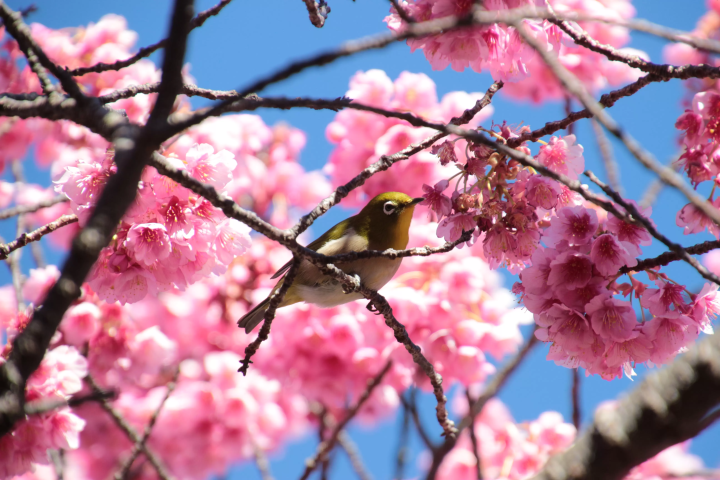Japan, Off The Beaten Path - Hiking Into History On Koyasan

“Japan, Off The Beaten Path” is a travel essay series by Susan Spann, author of the Hiro Hattori mystery novels. One of her favorite places in Japan is Koyasan, the Buddhist spiritual center in Wakayama. Read on to learn about the must-see places to visit on Koyasan.
Last month, a friend from the United States asked me to show her my favorite places in Japan. After visiting Tokyo, Kyoto, and Nara, we traveled three hours south into the mountains of Wakayama Prefecture, on the sacred Kii Peninsula, to spend the night on Koyasan.
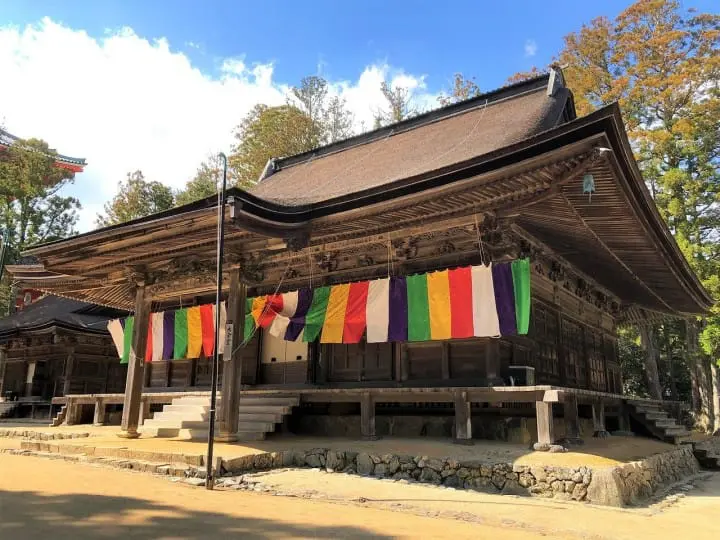
This sacred mountaintop plateau has been the headquarters of the Koyasan Shingon sect of esoteric Buddhism for over a thousand years. Established by the Japanese priest Kobo Daishi (774-835, also known as Kukai), Koyasan remains an active center of Buddhist study and practice, and also a popular destination for hikers, travelers, and pilgrims.
Its many sites of interest include dozens of temples, a museum, a famous hiking and pilgrimage route known as the Nyonin-Michi, and the largest cemetery in Japan.
Spending the Night in a Thousand Year Old Temple
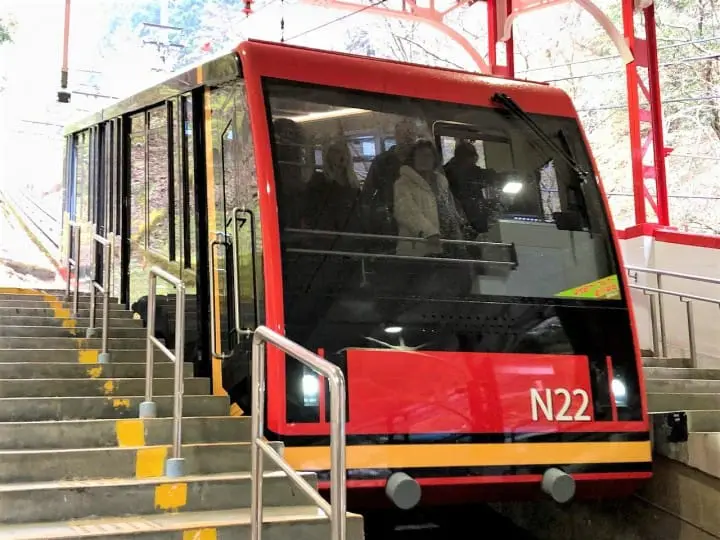
After riding the brand-new Koyasan cable car (which replaced the original cable car in March 2019) to the sacred plateau, my friend and I took a bus to Fudo-in, the shukubo (temple lodging), where we planned to spend the night.
From the bus stop, we walked up a tree-lined path, through the wooden temple gate, and into the landscaped courtyard.
Beside the entry, brilliant koi swam in a pond next to a statue of Kannon, the Buddhist goddess of mercy.
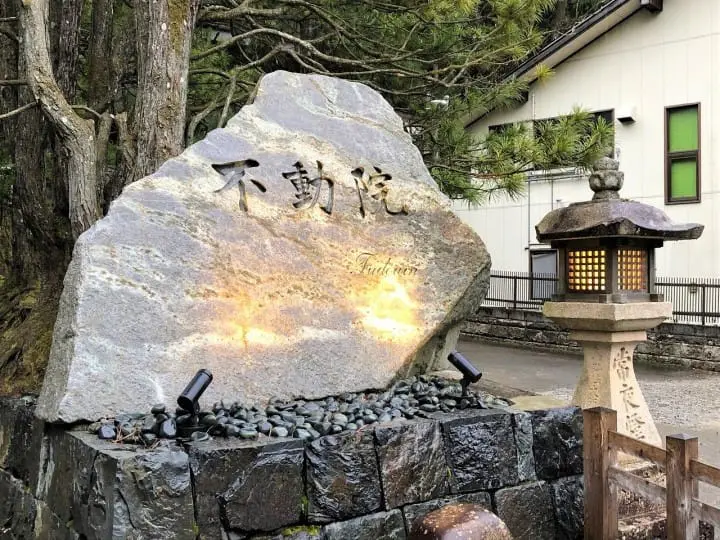
Like many temples on Koyasan, Fudo-in is over 1,000 years old. The priests welcome overnight visitors (you don’t have to be a Buddhist to stay in a shukubo). Spending the night in a Buddhist temple is a fascinating way to experience the culture and history of Koyasan, as well as the delicious, traditional Buddhist temple cuisine called shojin ryori.
A Sumptuous Meal to Remember

At dinnertime, a priest escorted my friend and me to a private dining room, where our evening meal was prepared and waiting.
Shojin ryori is an ancient cooking style that originated during the 13th century and uses no animal products of any kind. Every meal involves multiple courses that, together, contain five flavors (bitter, sweet, sour, salty, and umami), five colors (red, yellow, green, black, and white), and foods prepared in five different cooking styles (raw, boiled, fried, grilled, and steamed).
With such a wide variety of flavors and textures, shojin ryori is far and away my favorite kind of food—not only in Japan, but in the world. From crispy tempura with matcha salt to savory noodles with seasonal vegetables, every dish is a feast for the eyes as well as the palate.
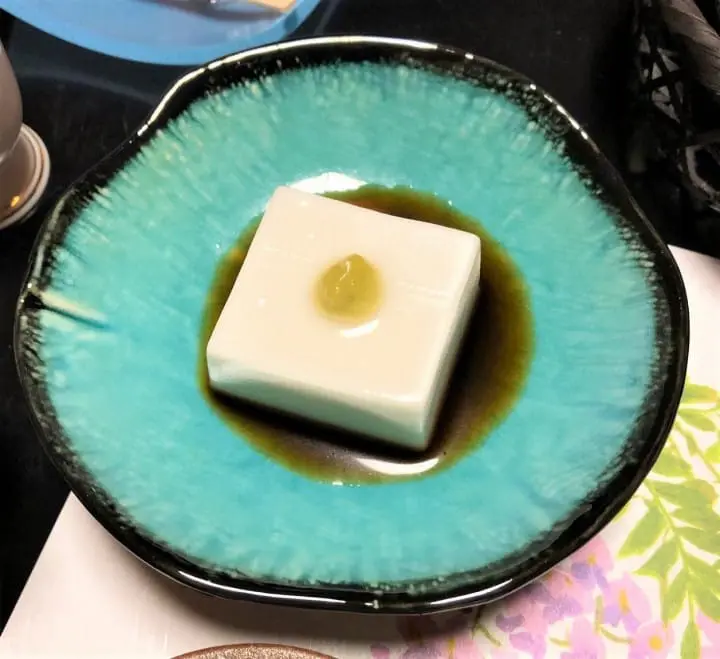
On Koyasan, shojin ryori meals also include a square of creamy, silky gomadofu, a delicious tofu made from sesame seeds instead of soy, as well as a special freeze-dried tofu known as Koyadofu.
Visiting Kobo Daishi at Okunoin
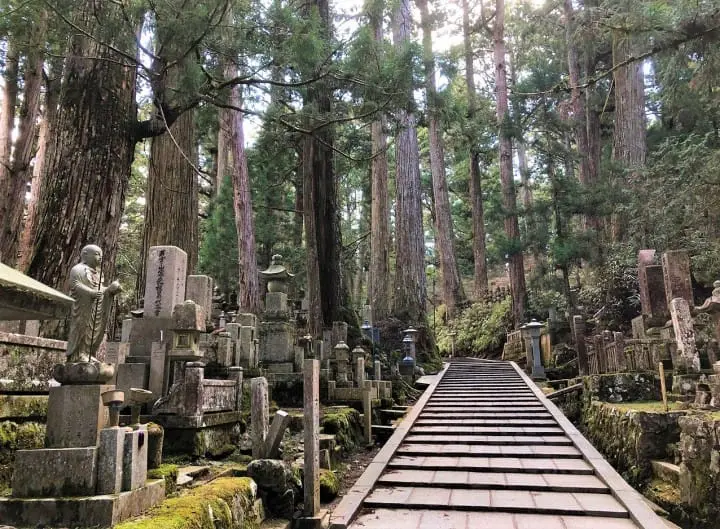
The morning after we arrived, my friend and I attended Buddhist services at Fudo-in and ate a delicious shojin ryori breakfast in one of the oldest buildings on Koyasan. Afterward, we walked down the road to the First Bridge (Ichi-no-hashi), which marks the entrance to Okunoin.
This massive cemetery—the largest in Japan—dates to the 9th century and contains over 200,000 graves and monuments. Massive cedars line the paths, some of them more than 600 years old. Thousands of statues, Buddhist stupas, Shinto torii, and other monuments fill the grounds beneath the trees.
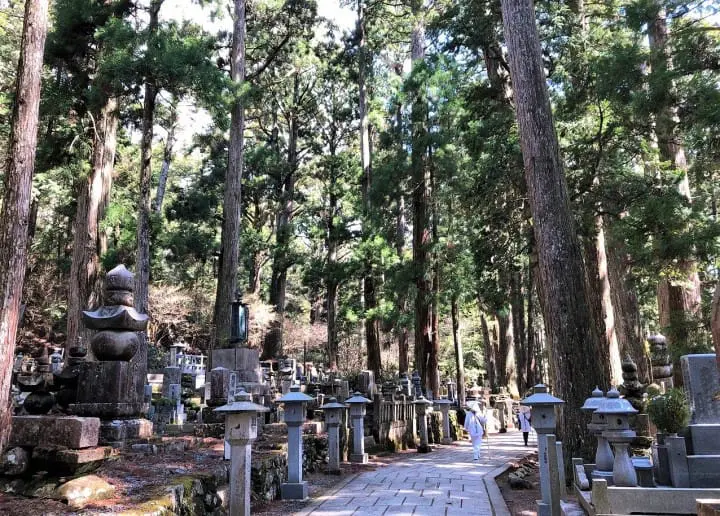
Some people find cemeteries frightening, but every time I visit Qkunoin. I feel an overwhelming sense of peace and beauty.
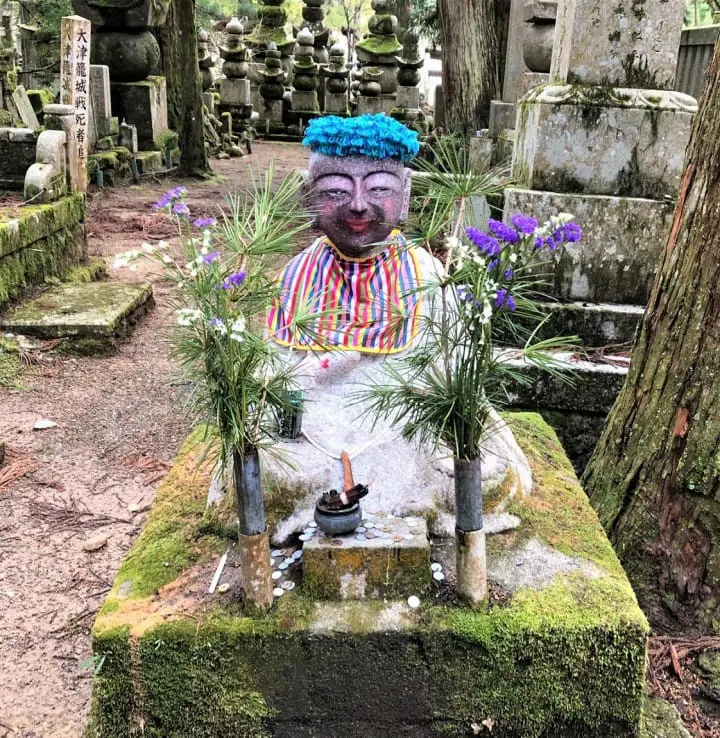
After purifying ourselves at the fountain and bowing politely in accordance with tradition, my friend and I crossed the First Bridge and walked along the path to the Second Bridge, where we paid a visit to the "Sweating Jizo." This is a stone statue of the Bodhisattva Jizo that supposedly sweats from the effort of the prayers he makes on behalf of suffering souls.
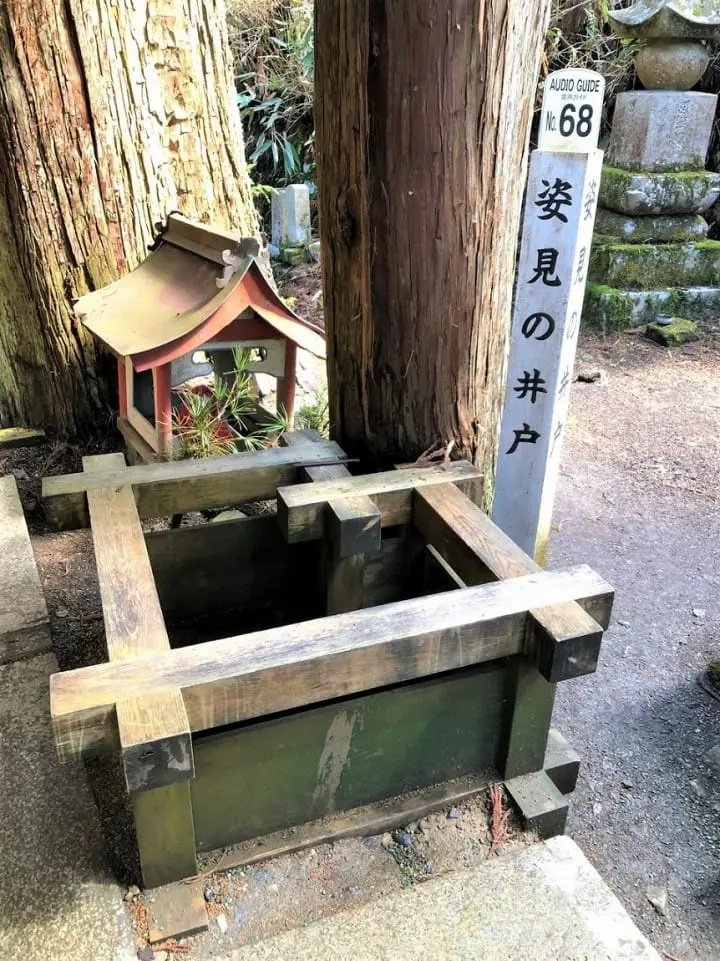
We also looked into the well near the Jizo and saw our reflections in the bottom—a lucky thing, because according to local legend, people who don't see their reflections are about to die.
Relieved to receive good news from the well, we walked to the far end of Qkunoin, where a third and final bridge (called the Gobyobashi) marks the approach to Kobo Daishi's mausoleum. Behind the mausoleum, we lit incense in front of the tomb where, according to Shingon belief, Kobo Daishi remains in eternal meditation, praying for the peace and enlightenment of the entire world.
Hiking into the Mountains on the Nyonin-Michi
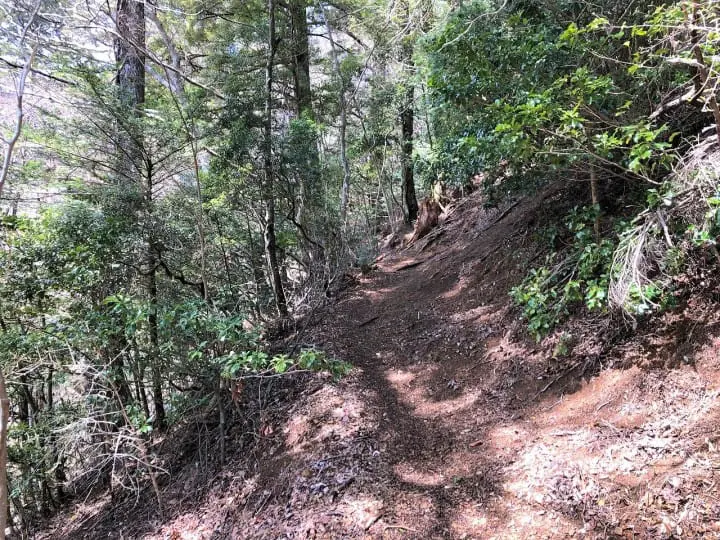
After visiting Kobo Daishi, we hiked into the mountains along the Nyonin-Michi, an ancient trail once used by pilgrims circumambulating the sacred plateau and by travelers journeying between Koyasan and other parts of the Kii Peninsula.
The trail leads up a winding forested slope past native koyamaki pines, the descendants of prehistoric trees that have grown on the Kii Peninsula for millions of years.
The forest smelled of vanilla, pine, and damp earth from the recent rain, and as we hiked we heard the songs of birds high in the trees.
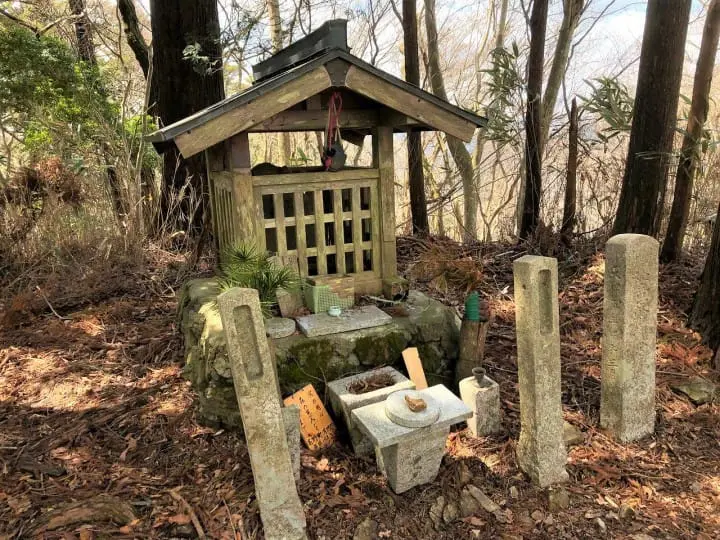
An hour after leaving Okunoin, we reached the summit of Manisan (1,002 m), one of the three sacred mountains known as the Koyasan Sanzan (Three Mountains of Koyasan) that, according to local belief, stand guard over Kobo Daishi and Okunoin. A small shrine stands on the forested summit, and we stopped to pay our respects to the sacred peak.
We didn’t have time to hike the entire Nyonin-Michi that afternoon, but we did enjoy spending some quiet time in the peaceful forest and catching glimpses of Koyasan's temples through the trees.
After returning from the Nyonin-Michi we made a quick visit to Danjo Garan, an ancient temple complex established by Kobo Daishi. We could have spent an entire day touring its many interesting buildings, but regrettably, we had another train to catch.
I’m always sad to leave Koyasan, but I’m already looking forward to the next time I return.
Text and photos by Susan Spann
Susan Spann is the author of the Hiro Hattori mystery novels. She lives in Tokyo, but frequently travels across Japan, climbing mountains and seeking adventures off the beaten path. You can find her online at www.susanspann.com.
Susan Spann is the author of the Hiro Hattori mystery novels. She lives in Tokyo, but frequently travels across Japan, climbing mountains and seeking adventures off the beaten path. You can find her online at www.susanspann.com.











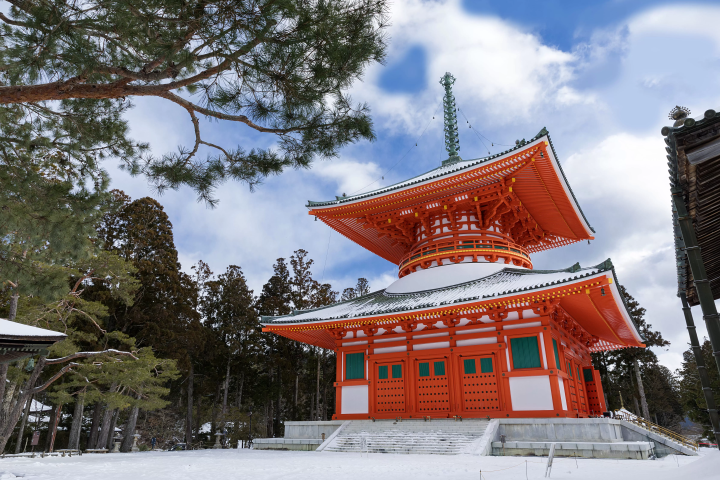































![[Yufuin] From breathtaking views to skin-beautifying hot springs. A variety of day trip hot springs to fully enjoy Yufuin](https://resources.matcha-jp.com/resize/720x2000/2026/01/18-255919.webp)
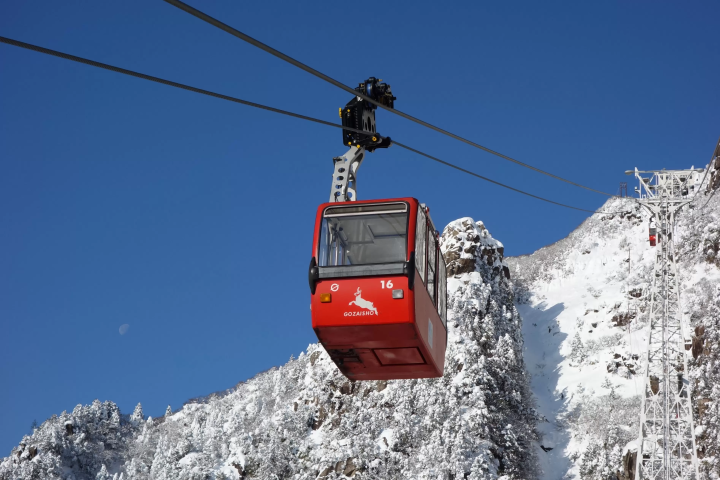
![[2026] The Matsusaka Lantern Festival will be held to light up the winter night sky!](https://resources.matcha-jp.com/resize/720x2000/2026/01/05-254777.webp)
![[List of Traditional Industry Experiences] Factory tours and craftsmanship experiences in southern Osaka and Wakayama](https://resources.matcha-jp.com/resize/720x2000/2025/11/06-249221.webp)
